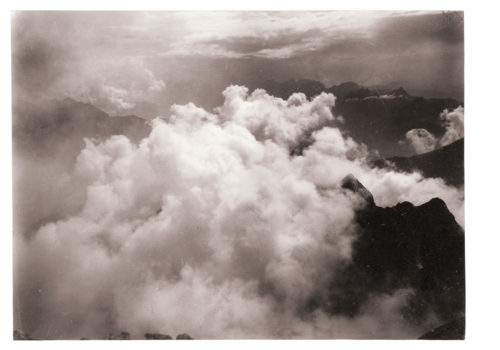Since its invention, photography has helped scientists take a closer look at clouds. The Winterthour Fotomuseum examines this felicitous collaboration.
A parakeet, an elf, a submarine. A stratus, a fibratus, a cirrocumulus.
Some people look at cloud shapes and see things. Others look for names. Scientists have long used photography to classify different types of clouds, and their knowledge of our skies has increased with technical innovations in the field. A lovely exhibition at the Winterthour Fotomuseum reviews this evolution.
First, men climbed ladders to photograph clouds. Albert Riggenbach, the Swiss astronomer, meteorologist and physicist, co-authored The International Atlas of Clouds in 1896. At the Fotomuseum, we see frames with original prints taken from an observatory on Mount Säntis. Cirrus clouds like wisps of smoke trail curly cirrocumulus. Each family of clouds is identified with elegant calligraphy. They’re followed by the thicker and more menacing cumulostratus. Then come the more eccentric cumulus clouds. The flat alto-stratus are much less recreational. The famous atlas sits in a display case, surrounded by texts by Bâlois. Until its publication, clouds were identified by drawings easily confused. Riggenbach hoped oppose the rigors of Swiss society with the wonders of the sky. “I’m fascinated that such blurry, beautiful images are the product of scientific inquiry. That paradox is the reason I put together the exhibition,” says Helmut Völter, the curator of “Cloud Studies.”
You can read the full text of this article by Caroline Stevan in the French version of La Lettre.
Cloud Studies – The scientific view of the sky
Until February 12, 2012
Fotomuseum de Winterthour
Grüzenstrasse 44
8400 Winterthur
Suisse
+41 52 234 10 60
















